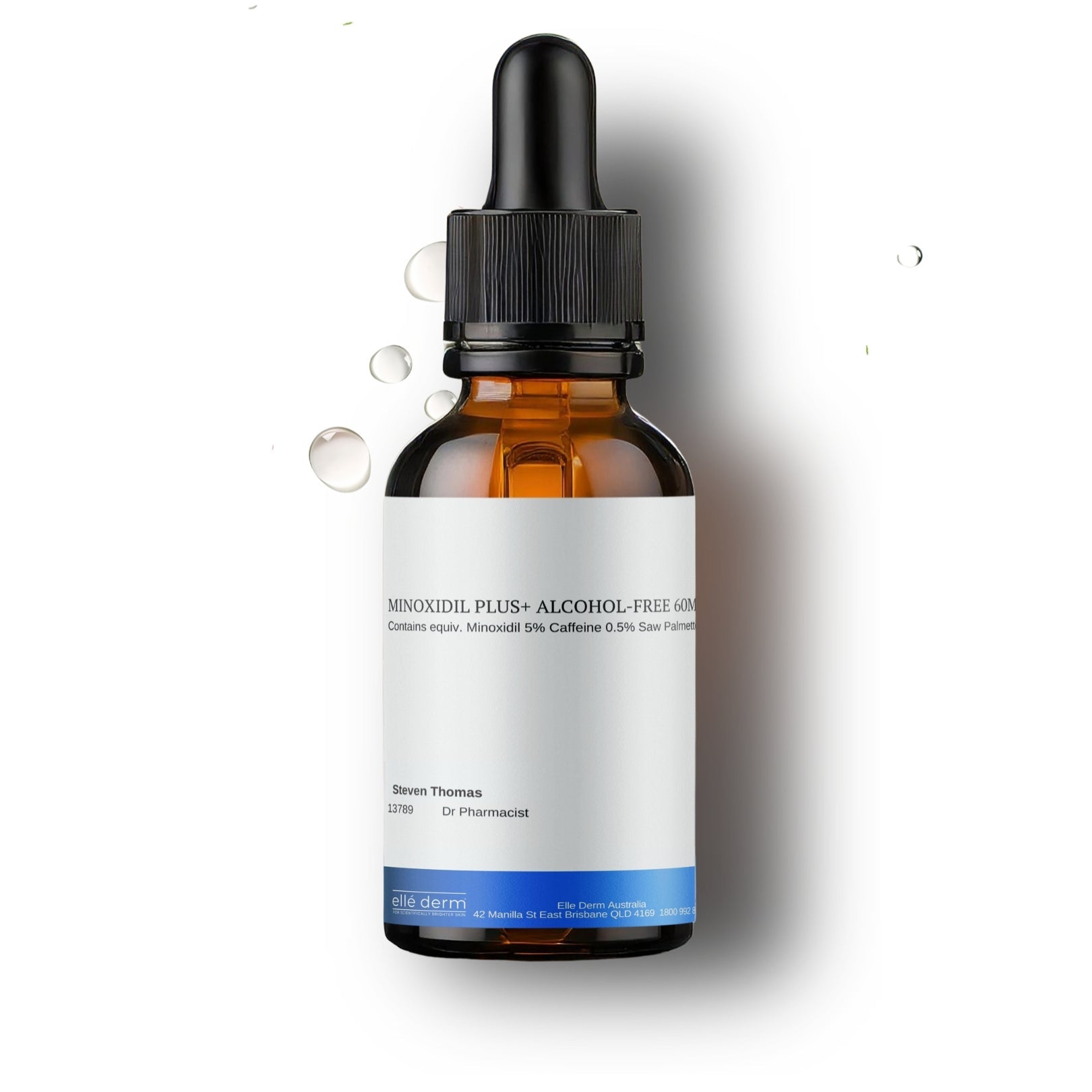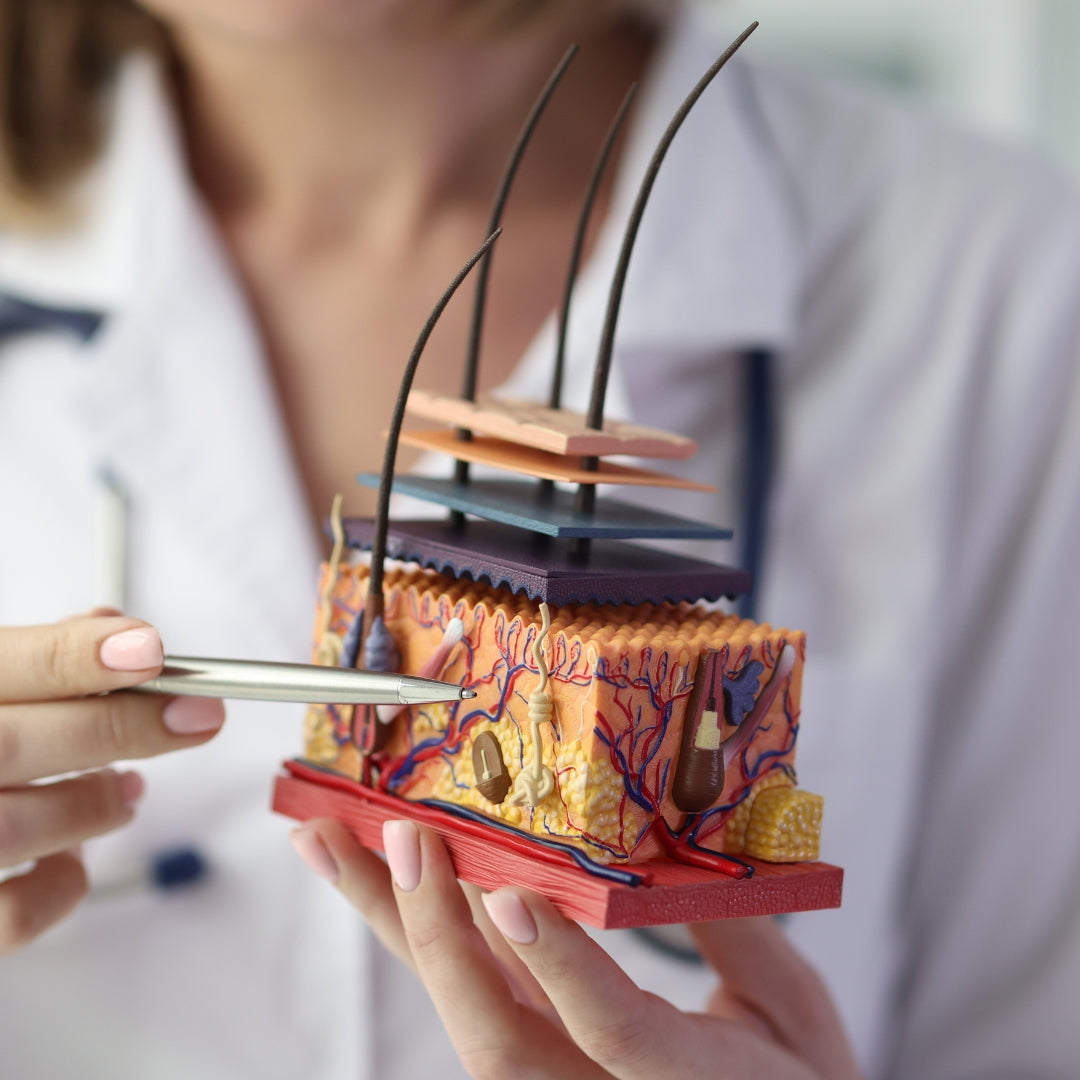3 Top Tips for Menopausal Hair Loss
Hair loss in women is characterised by a wider midline part and gradual thinning of the hair starting from the crown. During menopause, oestrogen and progesterone levels drop and there is a higher-than-normal level of testosterone relative to oestrogen, causing a range of symptoms such as hot flushes, weight gain and hair loss.
Studies have found post-menopausal women who experience hair loss have higher levels of androgens (e.g. testosterone and dihydrotestosterone) and low levels of oestrogen compared to post-menopausal women without hair loss. This finding is also consistent with women who are not going through menopause and are experiencing rapid hair loss.
The degree of hair changes during menopause can vary between each individual woman depending on genetics, lifestyle factors and concurrent medical conditions. This article will focus on how we manage hair loss safely, especially when it comes to addressing hormones.
Please remember to discuss all new treatments with your doctor to ensure they are appropriate for you before commencing.
What happens during menopause?
During menopause, there is a rapid decline in oestrogen and progesterone and a higher level of testosterone relative to oestrogen.
Why do we say relative?
There is also a decline in testosterone levels in women during menopause, but this decline is not as rapid as oestrogen. The decline in testosterone is one of the reason women experience a decline in energy levels, reduced libido and weight gain.
Getting back to menopausal hair loss ...
Testosterone is converted to dihydrotestosterone (DHT) and higher levels of testosterone relative to oestrogen means more is converted to DHT (there are exceptions to this rule under certain metabolic conditions). High levels of DHT in the scalp causes the hair follicles to miniaturise so much that the hairs become very fine (they lack density) and eventually give no coverage. Higher levels of testosterone relative to oestrogen also causes facial hair in women during menopause (sigh... as if waxing your legs, underarms and snail trail wasn't enough work).
Here are three things women can do to help combat hair loss.
1. Healthy nutrition
Healthy nutrition is important and ensuring our gut microbiome is also healthy is just as important. Our gut microbes are responsible for breaking down nutrients and allowing these nutrients to be absorbed into the bloodstream. As we age, the gut microbiome also changes, affecting the way we breakdown food.
Make sure you get in food that have natural probiotics such as kimchee and sauerkraut.
2. Natural remedies
There is good evidence for natural herbs such as Black Cohosh. These have a weak affinity to oestrogen receptors and can help to elevate oestrogen levels.
Saw Palmetto and Pumpkin Seed Oil have also shown to be a weak inhibitor of 5-dihydrotestosterone (5-DHT).
5-DHT is the enzyme that is responsible for converting testosterone to dihydrotestosterone (DHT), leading to hair follicle miniaturisation. You can find Saw Palmetto and Pumpkin Seed Oil in hair serums such as Minoxidil 5 Plus+.
3. Hormone replacement therapy
Balancing your hormones is the best way to target all the symptoms associated with menopause, including hair loss and loss of skin elasticity.
Hormone replacement therapy (HRT) is often confused with Bio-identical Hormone Replacement Therapy (BHRT).
Hormone replacement therapy uses body-identical hormones to supplement the natural loss women face during menopause and thus, help to alleviate the symptoms associated with menopause, with hair loss being one of them. Most HRT preparations are synthetic and readily available commercially.
BHRT is a newer version of HRT and is marketed as the natural alternative to HRT. BHRT preparations are not available commercially and they are compounded by a compounding pharmacist. The active constituents are derived from natural sources such as wild yam and manufactured to pharmaceutical standards. As such, these ingredients cannot be purchased from health food stores because they are extremely potent even in tiny doses.
In Australia, BHRT preparations require a prescription to purchase. This can cause a lot of confusion for women because on one hand, they are marketed as completely natural (which they are), yet they are potent, heavily regulated and difficult to source.
As with any treatment, always check with your medical prescriber.
References:
1) Australian Menopause Centre
2) Burger, H et al. "Hormonal changes in menopause transition." The Endocrine Society. 2002:57:257-75. doi: 10.1210/rp.57.1.257.



